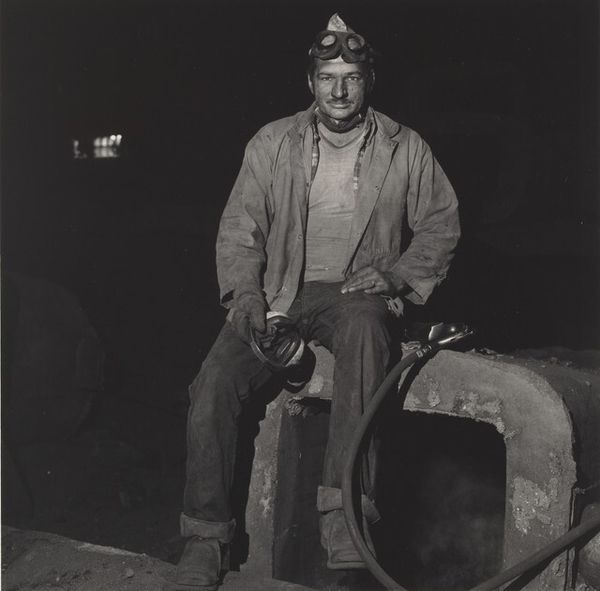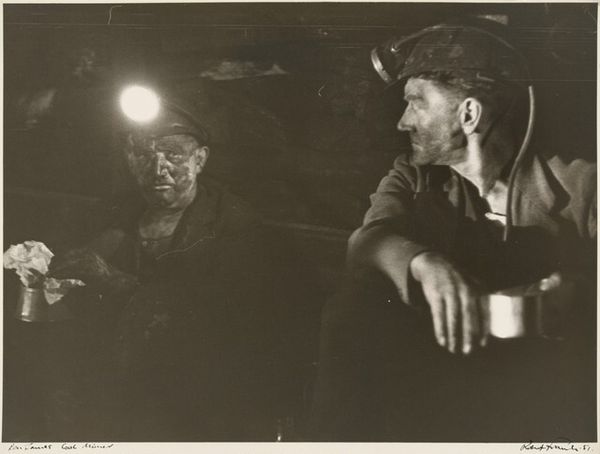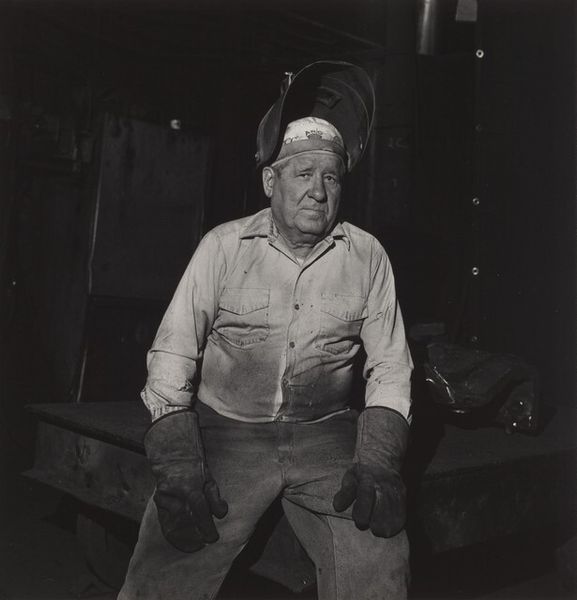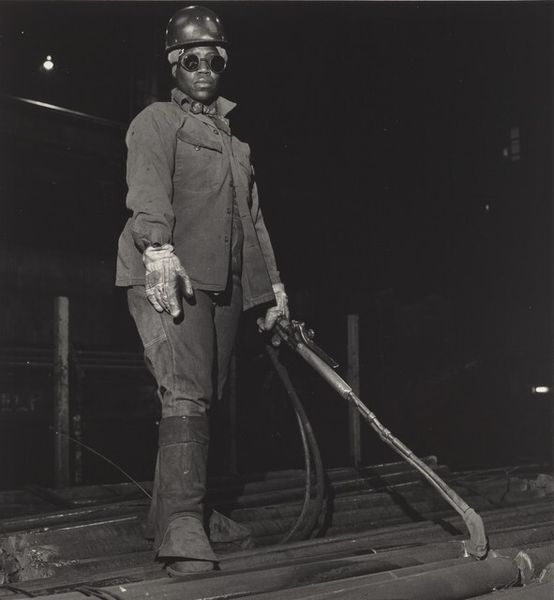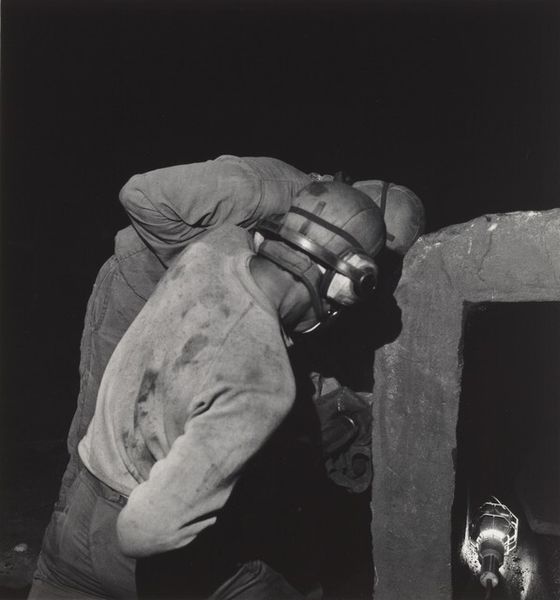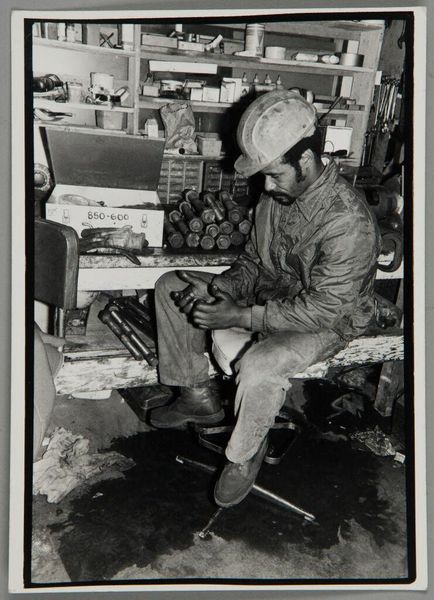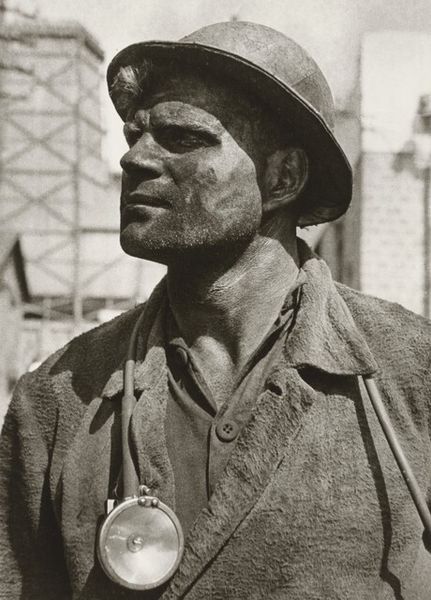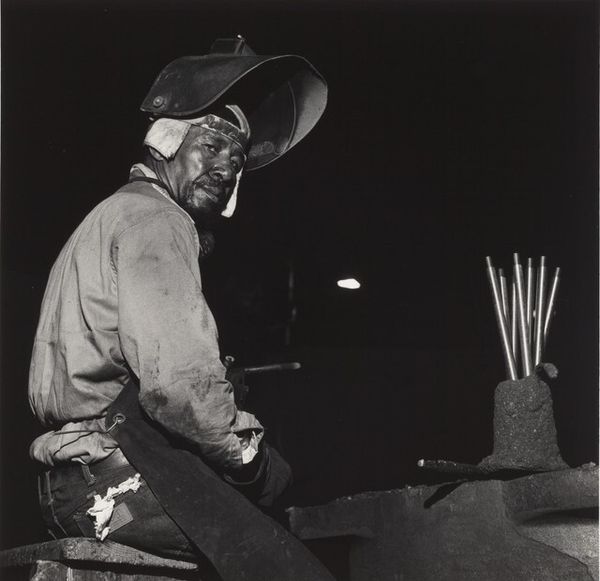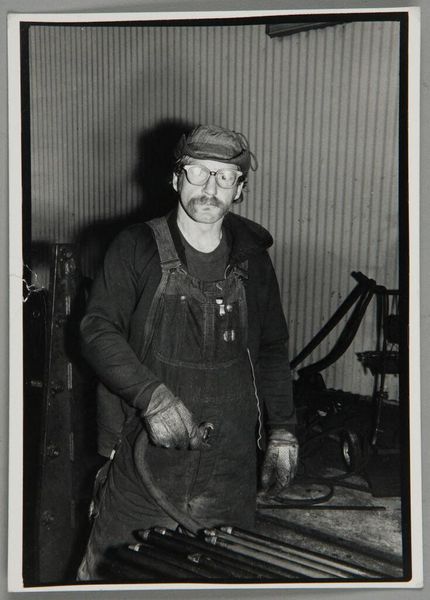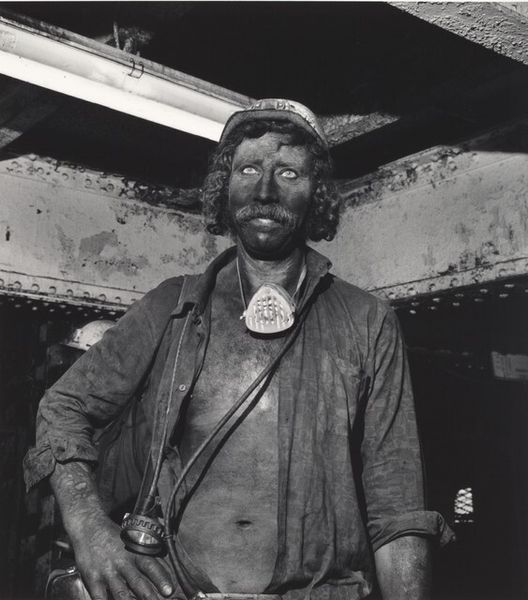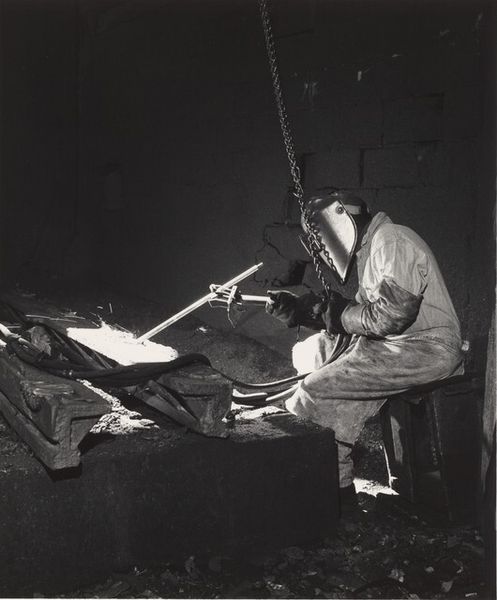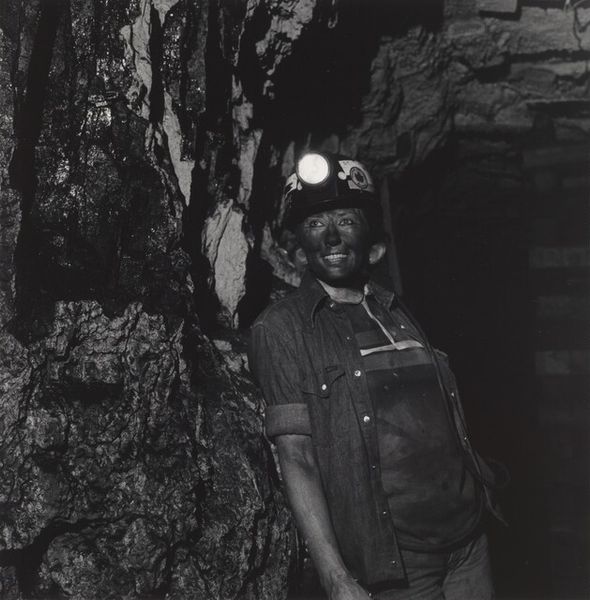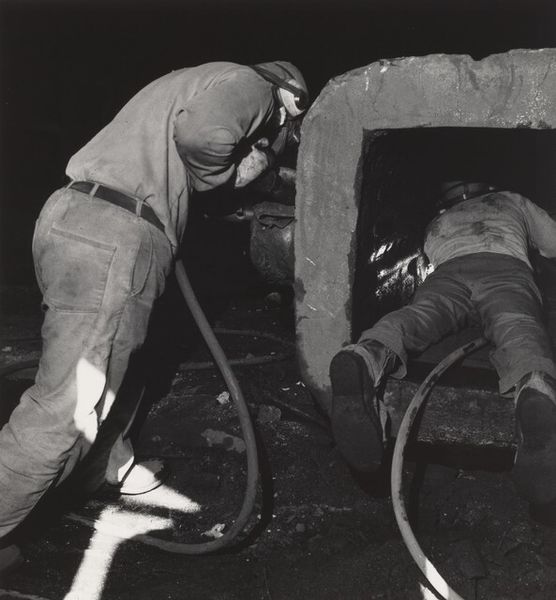
Welder, Atlas Steel Casting (Working People series) 1978 - 1979
0:00
0:00
photography, gelatin-silver-print
#
portrait
#
black and white photography
#
social-realism
#
photography
#
black and white
#
gelatin-silver-print
#
monochrome photography
#
ashcan-school
#
realism
Dimensions: image: 18.6 x 17 cm (7 5/16 x 6 11/16 in.) sheet: 25.3 x 20.3 cm (9 15/16 x 8 in.)
Copyright: National Gallery of Art: CC0 1.0
Curator: This powerful black and white photograph, titled "Welder, Atlas Steel Casting," is part of Milton Rogovin's "Working People" series, taken between 1978 and 1979. The medium used is gelatin silver print. Editor: It's stark. The high contrast immediately draws me to the subject's face, and there's something very dignified, almost heroic, in his expression, juxtaposed against the dark and gritty setting. Curator: Rogovin aimed to document the lives and labor of working-class individuals, humanizing those often overlooked. His work challenged prevalent narratives and aimed to give visibility to the backbone of industry and economy. This photograph functions as a lens through which we see themes of social inequality. Editor: I see echoes of social realism, maybe even some Ashcan School sensibilities, focusing on the everyday lives of working people. How do you think this portrayal speaks to contemporary audiences given the changes in labor and industrial work since the late 70s? Curator: I think it sparks a necessary dialogue about labor ethics and workers' rights. Looking at this image through the lens of contemporary feminism and critical race theory, we can discuss not only the historical exploitation of labor, but its present implications for marginalized communities globally. The welder's gaze becomes a confrontation, asking us what our responsibility is to systems of inequity. Editor: The institutional forces shaping these industries are immense, then and now. Viewing this today, one also contemplates how museums themselves, by exhibiting such photographs, play a role in framing our understanding of the worker – either as a symbol of resilience or as a subject of past injustice. Curator: Indeed, museums act as both containers and conveyers of narratives. The image pushes the institution towards reflexivity; compelling us to constantly question whose stories are told, how, and for what purpose. It’s not just a photograph of a welder. It’s a portrait of humanity within an oppressive environment, a visual plea for reform. Editor: Seeing Rogovin's intent and your interpretations has brought forward nuances that resonate profoundly, shifting it beyond simple documentation and into a potent commentary about our shared responsibility to the labor force, historically and contemporarily. Curator: Exactly, recognizing this man as part of an immense and resilient collective.
Comments
No comments
Be the first to comment and join the conversation on the ultimate creative platform.
